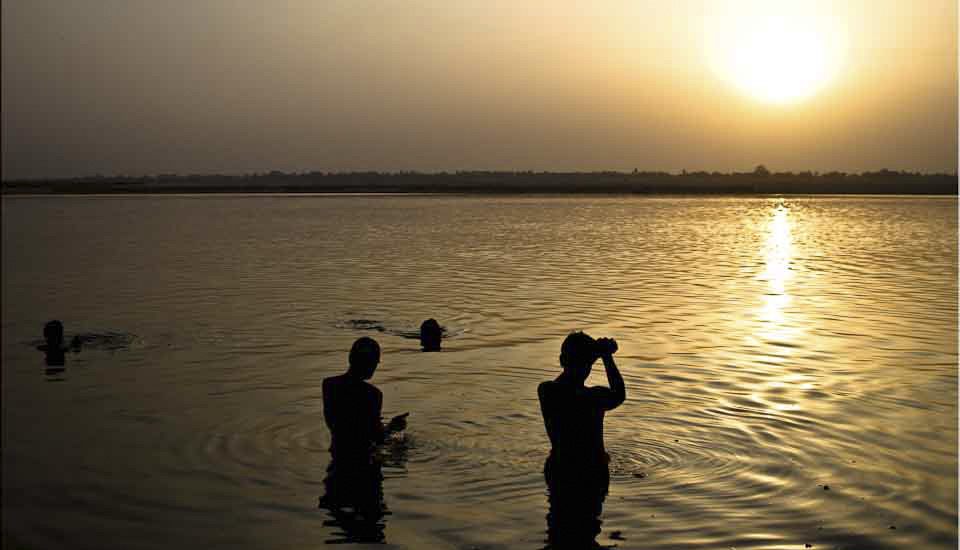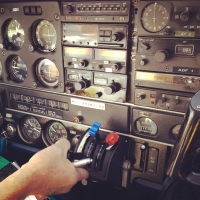.jpg)
Prayers
Ethiopia is one of the oldest Christian states in the world. The Entoto Maryam Church is probably the oldest building in use in the vicinity of Addis Ababa; it was full of active worshippers when I visited.
“And King Solomon gave the queen of Sheba all that she desired, whatever she asked besides what was given her by the bounty of King Solomon. So she turned and went back to her own land with her servants.”
Ethiopia – and its capital Addis Ababa – is the quintessential paradox.
According to an Ethiopian account from the 14th century, the visit of Makada, Queen of Sheba to King Solomon of the House of David, some time in the 10th century BC, resulted in a son – who grew up to become Menelik I, founder of the dynasty – at first Jewish, then later Christian – that reigned over the Empire of Ethiopia for most of the years from around 950 BC through to the overthrow of Haile Selassie in 1974. More than that, it is claimed that when Menelik visited Jerusalem as a young adult, King Solomon gave him a replica of the Ark of the Covenant; somehow, this was switched with the original – which is reputedly still in Axum, Northern Ethiopia.
Scholars may argue some – or all – of the details of this legacy, and the Ethiopian government and church may refuse all requests to see the alleged ark, but the story has had important and lasting effects on Ethiopian culture and psyche. There was no room for doubt in the mind of the young man who introduced me to the many precious early Christian artefacts in the small museum in the grounds of St George Cathedral in Addis Ababa.
On the other hand, my guide was quite skeptical about the origins of the remains of Lucy, the original Australopithecus afarensis, found in Ethiopia’s Afar Triangle in the Great Rift Valley in 1974. I’m old enough to remember when the results of that momentous find were publicised. I also remember watching the Leakey’s earlier explorations of the neighbouring regions (Dr Leakey and the Dawn of Man, 1966), and reading African Genesis (1961) by Robert Ardrey. So, I was very excited to visit the National Museum of Ethiopia in Addis Ababa, where a replica of Lucy – thought to be our 3.2 million year-old Hominini ancestor – is on display.
Ethiopia is home to over 80 different ethnic groups and about 90 individual languages; almost 2 million people practice traditional faiths – making it even harder to reconcile the differing “stories” of humanity. But, the country was the second to officially adopt Christianity (after Armenia) – as early as 324 CE. Today, while the Ethiopian Orthodox Tewahedo Church (a branch of Oriental Orthodoxy) is no longer distinguished as a state religion, it remains the major influence.
The number of Ethiopian Orthodox churches that dot the city – and are included in a city tour – are testament to this.
The heritage of – and reverence towards – Emperor Haile Selassie (1892-1975 – reigned: 1930-1974) is another conundrum. Also known as Ras Tafari Makonnen, he established Ethiopia’s constitution, implemented the legal basis for the abolition of slavery in Africa, and led Ethiopia to become a charter member of the United Nations. Revered as the returned messiah by the Rastafari religion originating in Jamaica in the 1930s, he enjoyed prestige and respect among world leaders – while also being condemned for poor human rights – until he was deposed and imprisoned in 1975.
A visit to a former palace, which Haile Selassie gave to University College of Addis Ababa in 1961, and which now houses the Ethnographic Museum, is also included in the city tour that I had organised for myself.
I was in the country for a photo-tour of the Omo Valley that was meeting up in the evening: the only sensible flight I could organise had me arriving at the airport before seven am. That gave me too much “down-time” to waste, but not enough to acclimatise properly, so I booked a day trip around the city, rather than trying to explore on my own.
This provided a small sampler of what the city has to offer.
.jpg)
Entrance to Entoto Maryam Church
The charming octagonal Maryam (St Mary) Church was built around 1882 by Menelik II while he was Negus of Shewa. It sits at 3200 meters above sea level, on the peak of Mt Entoto, just outside Addis Ababa.
.jpg)
Robes and Crowns
The yard in front of the church entrance was full of people, some in robes and crowns, …

Turbans and Robes
… others in robes and turbans.

Turbans and Maqwamiya
The prayer staffs (maqwamiya) that these men carry are symbolic of Christ’s body, as it came down from Heaven, and as it was lifted up in resurrection. They can be tucked under the arm as a support (as He supported people on earth), and are banged on the ground to maintain chant- and song-rhythms.

Prayers and Songs
It was a Sunday, so I was not surprised to see so much activity – but I was told this was part of a wedding celebration. I was very generously invited into the centre of the action …

Photographer
… even though a local photographer was clearly on the job.

Young Boy
Everyone was wearing their Sunday best. I love the colourful embroidery on the young lad’s collar: typical of Ethiopian fabric ornamentation.

Senasel – Sistrum
Like the maqwamiya (prayer staffs), the senasel (sistrum) are as symbolic as they are rhythmic. The front and back represent Jacob’s ladder and the angels, the sides are the old and the new testaments, and iron pieces inside symbolise the five pillars of the church.

Priest Chanting
The chants and prayers are performed in Geʽez – a South Semitic language dating back to between 4 and 10 CE – rather than in Amharic, which is the main language spoken in the country.

Musicians
Of course, a drum is not just a drum: a large kebero or hand drum, is used for the liturgical music. The drum is the body of Jesus, with the narrow end representing His human nature, and the wider end being His divine nature. Smaller kebero drums are used in secular celebrations.

Addis Ababa from Mount Entoto
Sitting at an altitude of 2,355 m (7,726 ft), Addis is the fourth-highest capital city in the world. From here on Mount Entoto (3200 m), we can look down over the city. It is mid-October: the rains are finished and the humidity is low; dust and pollution hang in the air, obscuring the skyline.

St. Mary’s Church
I spotted this lovely entry-arch on our way up the hill, and persuaded my guide to stop on the way back down. The blue dome is typical of Coptic Orthodox buildings.

Congregation outside St. Mary’s Church
Obscured by the darkness under the arches, the priest delivered a Sunday sermon to his gathered flock.

Local Textile Market
Further down the hill we stop at a local market …

Mannequin
… to admire the finely woven cottons decorating the well-worn mannequins.

Haile Selassie Finery
Selassie gave his Guenete Leul Palace to the local university; some of the rooms have been preserved in honour of him – while others are now the Ethiopian Ethnological Museum.

Ethiopian Coffee and the Herb Rue
The next stop was at a street-side coffee shop, where we sat on rickety stools enjoying rich, dark coffee with rue (Ruta graveolens).

Lugging Loads
After a visit to Lucy in the National Museum of Ethiopia, and a lunch of injera – the local staple: a spongy pancake-like bread made from teff, a native grain, and filled with meat and/or vegetables and spicy sauces, I persuaded my guide to take me to a local vegetable market.

Man in the Potatoes
He was quite surprised when many of the local vegetable-sellers were happy to have their pictures made.

Loads in the Road

Veggie Sellers
It was dark inside the sheds, but the people were friendly – regarding me with curiosity.

St George Cathedral
My last stop was at St George Cathedral, one of the oldest cathedrals in Addis Ababa. It was commissioned by Emperor Menelik II following his 1896 victory over the Italians in Adwa, and finished in 1911.

St George
Emperor Menelik II dedicated the church to St George, Ethiopia’s patron saint.

Coptic Cross
According to local lore, St George was an Ethiopian, born in Palestina: at that time a country ruled by the Moors.

St George Cathedral from Outside
I was lucky enough to be able to look through the museum on the St George Cathedral grounds. No photos are allowed in the small building crammed full of precious religious iconography, but my guide was in his element – and determined to explained every artefact in great detail.
Before long my head was spinning! I blamed it on jet-lag, and called it a day.
 I still can’t come to grips with the legends, the beliefs, and the complex history of the Ethiopians.
I still can’t come to grips with the legends, the beliefs, and the complex history of the Ethiopians.
But, they sure make great coffee!
Happy Travels.
Photos: 14October2018





























.png)

